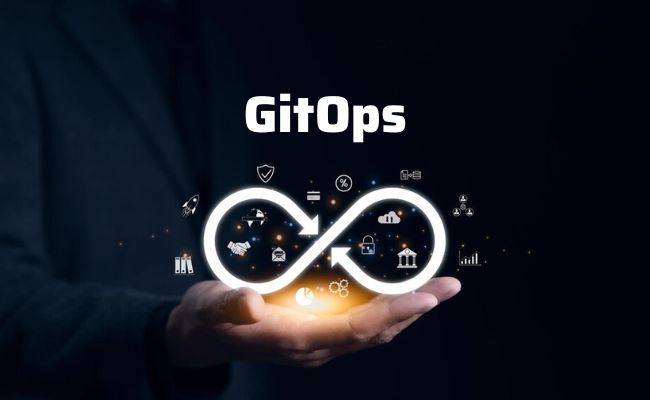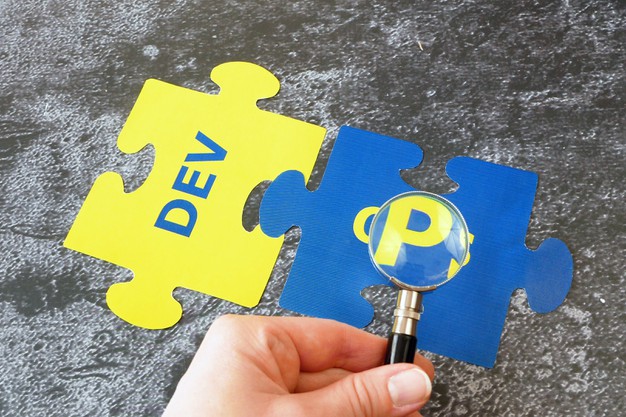In the ever-evolving tech world, DevOps is like that friend who keeps leveling up just when you think you’ve caught up. If you’re in tech or even casually interested, you’ve noticed how the pace keeps speeding up.
2025 is shaping up to be a big year for DevOps, with trends that aren’t just buzzwords but real game-changers. Here in this article, we will discuss the emerging DevOps trends to watch in 2025. So, without any ado, let us get started.
Emerging DevOps Trends
1. AI-Driven Automation: The DevOps Power Boost
You’ve heard the chatter about AI transforming industries, and DevOps is no exception. By 2025, AI-driven automation will be the backbone of many DevOps pipelines. Think about the mundane tasks that eat up time—code testing, performance monitoring, incident resolution.
Now, imagine those tasks handled in seconds by intelligent systems. AI won’t just take over repetitive work; it’ll predict problems before they happen.
For instance, AI-based tools are already analyzing patterns to identify potential system bottlenecks or vulnerabilities. Next year, this tech will be smarter, spotting anomalies that even seasoned engineers might overlook.
If you’re worried about AI taking jobs, here’s the truth: it’s more about shifting roles. Instead of drowning in manual processes, engineers will focus on strategy and innovation.
Companies like Google and Netflix are already leading this charge, using AI to refine their CI/CD pipelines. Expect a surge in tools integrating AI models tailored for DevOps tasks.
2. DevSecOps: Security Moves Left
Security hasn’t always been the star player in DevOps. It’s often an afterthought, addressed once the code is live (or worse, when something breaks). That’s changing fast. DevSecOps, where security is baked into every stage of the pipeline, will dominate discussions in 2025.
Why? Cyberattacks aren’t just increasing; they’re getting smarter. Traditional defenses are like locks on doors when hackers are tunneling through walls.
Developers will now wear the security hat more often, whether they like it or not. Automated tools will play a huge role here, scanning code for vulnerabilities during development itself.
GitLab’s security scanning features are just a start. By next year, tools will evolve to not only find flaws but also suggest fixes, saving time and headaches. Meanwhile, zero-trust architectures will continue to rise. It’s a fancy term, but it boils down to this: don’t trust anyone or anything by default, even inside your network.
The whole “move left” mantra will ensure security checks are as integral as version control. If you’ve been slacking in this area, it’s time to tighten up. Your systems—and your users—will thank you.
3. GitOps Gains Momentum

GitOps is like DevOps’s cooler sibling, and it’s making waves. At its core, GitOps simplifies operations by using Git as a single source of truth. Sound basic? Maybe.
But in 2025, GitOps will take off in ways you’ve never seen before. Companies are adopting it to manage infrastructure and applications seamlessly.
Instead of juggling configurations manually or using scattered tools, you’ll push changes directly from Git repositories. Imagine fewer surprises during deployments and rollbacks that are as simple as rewinding your favorite playlist.
Tools like ArgoCD and Flux are setting the stage, but their capabilities are only expanding. Kubernetes is fueling this trend since GitOps aligns perfectly with its declarative nature. If you’ve struggled with scaling, GitOps can be your guiding star.
It ensures consistency across environments, whether it’s staging, production, or that quirky testing setup you barely understand. By next year, even skeptics will hop on board, realizing how GitOps doesn’t just streamline workflows; it’s a sanity saver in the chaos of modern DevOps.
4. Platform Engineering: Simplifying Developer Experience
Developers want to code, not wrestle with infrastructure. Platform engineering is stepping in to fix that. By 2025, more organizations will embrace internal developer platforms (IDPs) to simplify the experience.
Think of it as a curated menu where developers pick what they need without navigating the entire kitchen. These platforms provide self-service capabilities for deployments, monitoring, and more – all pre-configured and ready to go.
The rise of platform engineering reflects a growing understanding that happier developers produce better software. It’s about removing friction and giving teams the tools they need without red tape. You’ll hear more about tools like Backstage (developed by Spotify) as they make the rounds in tech conversations.
The shift isn’t just technical; it’s cultural. Teams will collaborate better, innovate faster, and burn out less. If you’ve ever spent hours debugging a deployment pipeline, you’ll appreciate how platform engineering changes the game.
5. Edge Computing Meets DevOps

Edge computing has been on the radar for a while, but its role in DevOps is becoming more serious. By 2025, as IoT devices and 5G networks multiply, edge computing will no longer be niche.
The need for localized data processing will push DevOps teams to rethink traditional pipelines. Deploying updates to edge devices, managing distributed environments, and ensuring performance across countless endpoints – that’s the new challenge.
Companies like AWS and Azure are already offering edge solutions, but the operational complexities are still being ironed out. DevOps practices will adapt, with lightweight containers and microservices playing a big role. You’ll also see CI/CD pipelines designed specifically for edge scenarios.
Imagine updates rolling out seamlessly to thousands of devices scattered across cities, all without a hitch. If that sounds sci-fi, think again. By 2025, it’ll be the norm. And if you’re not preparing for it now, you might find yourself stuck in the slow lane.
6. Observability 2.0: Beyond Monitoring
By 2025, observability will evolve into something much more robust. The shift isn’t just about collecting metrics; it’s about making sense of them.
Observability 2.0 will rely heavily on AI and machine learning to analyze data and provide actionable insights. It’s like having a crystal ball that not only shows problems but explains why they happened and how to fix them.
Tools like Splunk and New Relic are already moving in this direction, but the future is even brighter. Expect real-time dashboards that go beyond fancy visuals, diving deep into the “why” behind every metric spike.
The goal is proactive management. Instead of firefighting, you’ll prevent fires altogether. It’s a mindset shift, and it’s coming fast. If you’ve ever felt overwhelmed by logs and alerts, Observability 2.0 will be your lifesaver. By next year, teams that ignore this trend will risk falling behind—and no one wants to be the one picking up the pieces.
Final Thoughts
2025 is shaping up to be an exciting year for DevOps enthusiasts. These trends aren’t just tech jargon; they’re the tools and practices that will define how we build, deploy, and maintain software.
From AI-driven automation to edge computing, each trend promises to reshape the field. If you’re looking to stay ahead, now’s the time to start exploring and adopting these practices. Because in the fast-moving world of DevOps, standing still isn’t an option.
